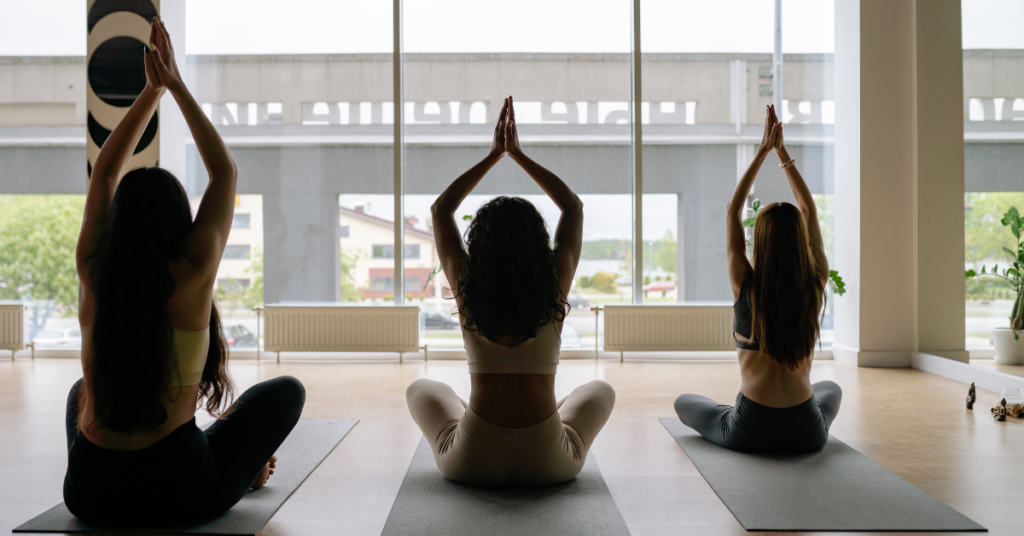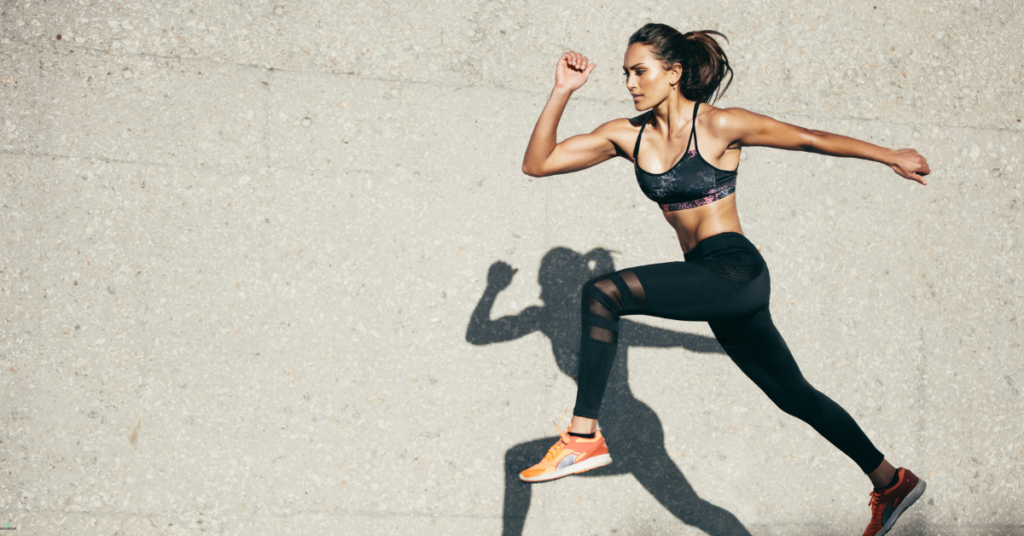When most people think of yoga, they picture slow stretching, incense, and quiet studios. But for athletes—whether you’re a weekend warrior or a pro—yoga for athletes is something entirely different. It’s a dynamic tool for unlocking performance, enhancing recovery, and building a stronger, more balanced body.
Today’s top athletes are discovering that what happens off the field is just as important as training on it. Strength, speed, and endurance may be essential, but mobility, mental clarity, and injury prevention are the secret weapons that can make or break your performance.
That’s where yoga for athletes comes in.
More than just stretching, yoga builds functional strength, body awareness, and resilience—all while helping you stay mentally focused and physically mobile. Whether you’re sprinting on the track, hitting the gym, or dominating the court, adding yoga to your routine can help you move better, feel better, and perform at your peak.
In this article, we’ll explore what yoga really is, how it benefits athletes at all levels, and why it might just be the missing piece in your training program.
What Is Yoga?

Before diving into the benefits, let’s first answer a simple but important question: what is yoga?
Yoga is an ancient mind-body practice that originated in India over 5,000 years ago. It’s more than just physical exercise—it’s a holistic system that combines movement (asanas), breath control (pranayama), and mindfulness or meditation to promote overall well-being.
When people ask “what is yoga?”, they’re often surprised to learn it’s not only about flexibility. While stretching is part of the practice, yoga also builds strength, balance, and mental focus, making it a powerful complement to any athletic training regimen.
There are many different styles of yoga, ranging from gentle and meditative to strong and dynamic. Whether it’s a slow Yin class or a fast-paced Vinyasa flow, all types of yoga aim to create harmony between the body and mind.
For athletes, yoga offers a way to connect more deeply with the body, correct muscular imbalances, and build the kind of strength that supports peak performance—not just in the gym, but in sport and life.
Yoga for Athletes or Why Athletes Should Practice Yoga

Athletes are always looking for ways to get stronger, move better, and recover faster. While traditional strength and cardio training are essential, more and more elite performers are turning to yoga for an edge—and for good reason.
Here’s how yoga helps athletes optimize performance, prevent injuries, and train smarter:
1. Increases Flexibility and Range of Motion
Tight muscles limit movement and increase the risk of injury. Yoga gently stretches major muscle groups—hamstrings, hips, quads, shoulders, back—releasing built-up tension from training.
- A tennis player might notice better shoulder mobility for powerful serves.
- A runner can experience smoother stride length with open hips and hamstrings.
Improved flexibility means better movement mechanics, which can translate to faster sprinting, smoother turns, and a lower risk of strains or tears.
2. Builds Functional Strength
Yoga is more than just stretching. Many poses require you to support your body weight, building functional, full-body strength that mirrors real athletic movements.
- Poses like Chaturanga and Plank work the arms, shoulders, and core.
- Standing poses like Warrior and Chair build lower body strength and endurance.
This type of strength improves muscle endurance, joint stability, and coordination—especially useful for sports with dynamic or explosive movements.
3. Enhances Core Stability and Balance
Every sport requires a strong core. Whether you’re swinging a racket, throwing a ball, or jumping, your core is the engine that drives movement.
Yoga trains deep stabilizer muscles in the abs, obliques, and back, improving both static and dynamic balance.
- Improved balance helps skiers, surfers, and gymnasts stay centered.
- A stronger core helps sprinters and cyclists generate more power with less effort.
Plus, many yoga poses challenge proprioception (body awareness), sharpening your ability to react quickly and stay agile on your feet.
4. Accelerates Recovery and Reduces Soreness
After tough training sessions, recovery is key—and yoga is a powerful recovery tool. Gentle flows and long-held stretches help:
- Flush out lactic acid
- Improve circulation
- Release fascial tension
- Calm the nervous system
Yoga also promotes parasympathetic activation—your body’s rest-and-repair mode—which reduces cortisol (stress hormone) levels and supports tissue healing.
A short yoga session after a workout or on a rest day can leave you feeling loose, light, and ready for your next challenge.
5. Improves Breathing and Endurance
Athletes often underestimate the power of the breath. In yoga, breath awareness (pranayama) is a central focus. Controlled breathing helps:
- Deliver oxygen more efficiently to muscles
- Improve lung capacity and stamina
- Reduce stress and anxiety during competition
Training your breath in yoga can lead to better performance under pressure—whether you’re finishing a long-distance race or hitting a game-winning shot.
6. Develops Mental Focus and Emotional Resilience
Mental strength is what separates good athletes from great ones. Yoga helps develop the ability to:
- Stay present and focused
- Manage nerves and pre-game anxiety
- Recover from mistakes quickly
- Perform with intention and clarity
Regular practice encourages mindfulness, improving self-awareness and emotional control. These skills are vital during high-stakes games or competitions where every decision matters.
7. Prevents Overuse Injuries
Many sports involve repetitive movements—like serving in tennis or running in a straight line. Over time, this creates imbalances in the body.
Yoga introduces diverse movement patterns, lengthens tight muscles, and strengthens underused ones. This helps bring the body back into alignment and reduces the chance of:
- Tendonitis
- Shin splints
- Rotator cuff injuries
- Lower back pain
Incorporating yoga even once or twice a week can make a big difference in staying injury-free and consistent in your training.
8. Supports Longevity in Sport
Every athlete wants to perform well—not just today, but for years to come. The low-impact, joint-friendly nature of yoga helps protect your body while keeping it mobile, strong, and resilient.
Athletes like Tom Brady (NFL) and LeBron James (NBA) have credited yoga and mobility work as key components of their long careers.
Best Types of Yoga for Athletes
1. Vinyasa Yoga – Dynamic Flow for Strength and Stamina
Vinyasa yoga is a fast-paced, flowing style that connects movement with breath. It’s ideal for athletes looking to build functional strength, cardiovascular endurance, and body awareness.
- Great for warm-ups or active recovery
- Builds core strength and coordination
- Keeps your muscles active while improving mobility
Perfect for: Runners, CrossFit athletes, martial artists, and anyone needing a full-body, balanced workout.
2. Yin Yoga – Deep Stretching and Recovery
Yin yoga is slow and meditative, with poses held for 3–5 minutes. It targets the deep connective tissues, fascia, and joints, making it a favorite for active recovery days.
- Improves flexibility and joint health
- Releases tight hips, hamstrings, and back
- Encourages relaxation and mental clarity
Perfect for: Endurance athletes, lifters, tennis players, and anyone recovering from intense training.
3. Power Yoga – Strength Meets Mobility
Power yoga is like Vinyasa’s athletic cousin. It’s a more intense, strength-focused practice that still flows but adds longer holds and challenging poses.
- Builds muscular endurance and balance
- Enhances full-body strength
- Keeps athletes mentally and physically engaged
Perfect for: Athletes who want to sweat, strengthen, and stay mobile—like football players, basketball players, or gymnasts.
4. Hatha Yoga – Balanced and Foundational
Hatha yoga focuses on posture alignment, slow movement, and breathwork. It’s a great entry point for beginners and ideal for rest days or light recovery.
- Enhances body awareness and balance
- Supports mindfulness and stress relief
- Builds a strong foundation for more dynamic yoga styles
Perfect for: All athletes, especially those new to yoga or looking for a slower-paced option.
5. Restorative Yoga – Total Recovery and Relaxation
This style is all about passive stretching and deep relaxation. With the help of props like blankets and bolsters, you’ll stay in fully supported poses for extended periods.
- Triggers the parasympathetic nervous system
- Reduces stress and speeds up recovery
- Helps with mental reset and emotional regulation
Perfect for: Burned-out athletes, rest days, or the night before competition.
Quick Tip: Mix and Match
Don’t feel like you have to choose just one style. Combining different types of yoga throughout your week—like Vinyasa on training days and Yin on recovery days—can give your body exactly what it needs, when it needs it.
Pro Athletes Who Swear by Yoga
Yoga isn’t just for yogis in studios—it’s part of the routine for some of the world’s top athletes:
- LeBron James uses yoga for flexibility and injury prevention.
- Novak Djokovic credits yoga and meditation for his mental resilience on the tennis court.
- Tom Brady includes yoga in his TB12 method to stay mobile and avoid injuries.
Conclusion: The Winning Edge of Yoga for Athletes
In the world of sports, every advantage counts. While strength training and conditioning will always be essential, adding yoga to your routine can be the game-changer you didn’t know you needed.
Now that you know what yoga is—a practice that blends movement, breath, and mindfulness—it’s clear why it’s becoming a staple in the training programs of top athletes around the world. Yoga for athletes isn’t just about getting more flexible; it’s about creating a body that’s strong, mobile, balanced, and resilient.
Whether you’re recovering from an intense workout, prepping for a big competition, or simply aiming to stay injury-free and focused, yoga can help you perform at your highest level—both physically and mentally.
So roll out your mat, tune into your breath, and give your body the care it needs to keep pushing forward. Because the stronger your foundation, the higher you can rise.
Images: canva



